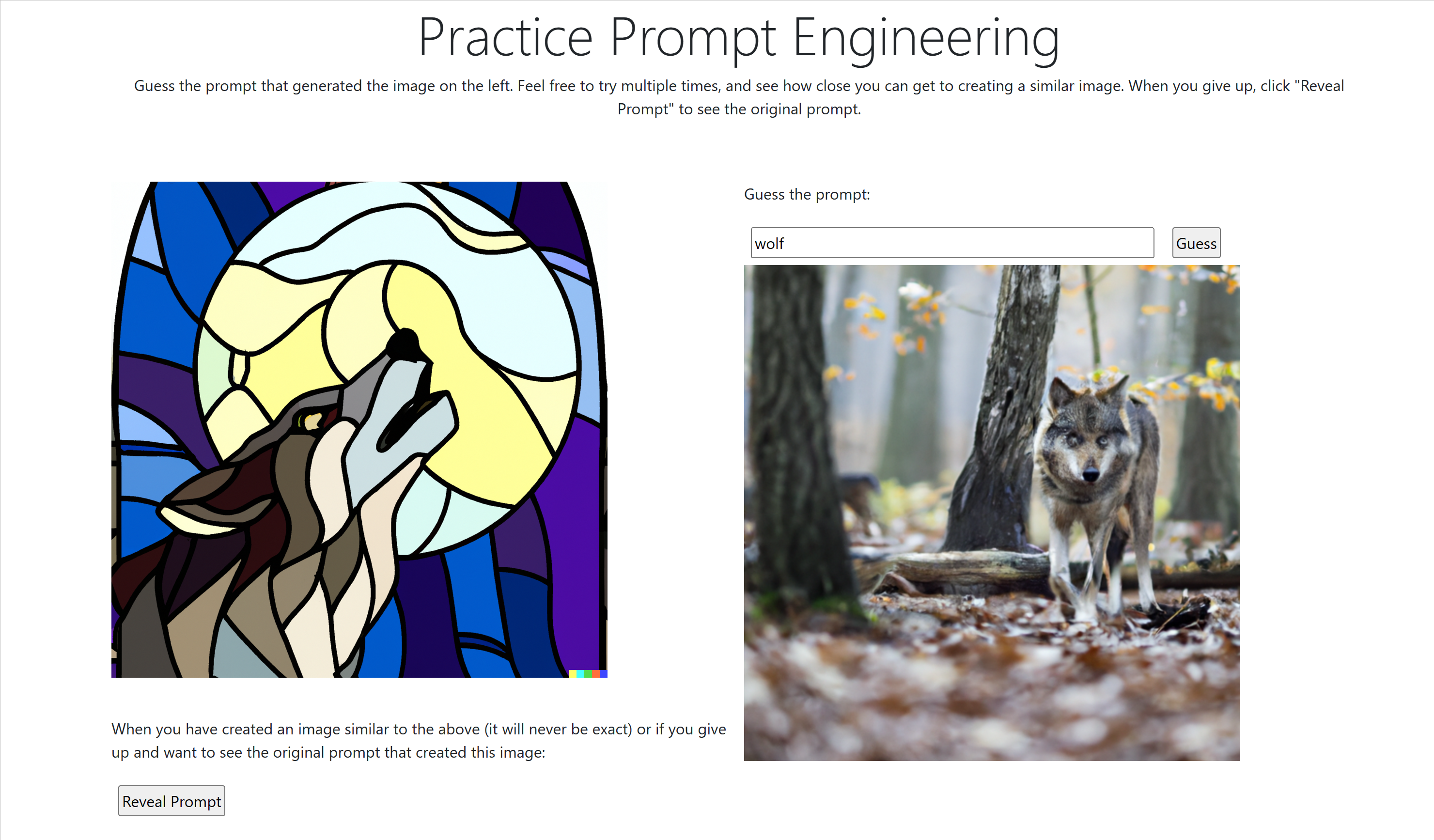Learn prompt engineering by iterating over image prompts with the DALL-E model.
The motivation behind this demo is to help teach the concept of prompt engineering. I used DALL-E for two reasons:
- It's a shipped, public model.
- It's easier to learn prompt engineering with images than with text generation.
I created this based on a conversation I had with someone to help teach him prompt engineering. I asked him to visualize a picture in his head and then describe it to me. He said "a baseball stadium". So I put those words in DALL-E, showed him the resulting image, and asked him how close it was. The image shown had no players on the field (an empty diamond), and he was picturing baseball players on the field. The image also showed a view from the field, and he was picturing it from the top row of the stadium looking down. He continued to refine his description and I continued to put his words into DALL-E until we got something close, and he understood the right level of detail, style and lighting cues, and things to ask for through this iterative process. So I created this app to mimic our experience.
Here's a screenshot of the website. Originally, the image on the right is blank. An image is displayed on the left, and the user can iteratively guess prompts until they get a similar image. I call out explicitly that it will never be exactly the same. When you are ready, clicking the "Reveal Prompt" button will show the prompt that created the original image. A "next" button (not shown below) would take you to another random image in the collection.
You will need an Azure OpenAI resource. You can create a resource following the instructions at https://learn.microsoft.com/azure/cognitive-services/openai/how-to/create-resource.
Clone this repo. In the appsettings.json file, replace the values for "AzureOpenAIResourceName" and "AzureOpenAIResourceKey" with your corresponding resource name and key from the Azure OpenAI service. These values can be found at the Azure portal. The resource name is not the full https://my-aoai.openai.azure.com/ endpoint, but just the value "my-aoai".
